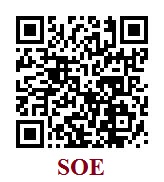|
�x�M��Яf
�@�뱡�p�U�A�x�M��Яf�A�q�`�Q�٬���PBFD�A�Q�{���O�@�Ӧ~�����x�M�f�A�@��i�F3���C�M�ӡA�~�ָ��j�������A������20���A�w�b�{�ɤW���`�b�L�̪��ͬ����A�i�H�]��M���}�Ҧ�����HPBFD���C�ڻ{���A�����q�`���S��PBFD�f�r�b�~�����ɭԡA���L�̪��K�̨t�Τ��j�A�L�̥i��|�X�{���`�F�h�~�A�̫�~�o�i��PBFD����H�C�ڱ����A�o�dz����P�V�A�ó̲ץ��}���f�A�]�\�h�~�H��C
�p�G�@�������X���APBFD���e�����Ф�A�L�̱`�`���{�X���`���g�媺�Ф���X�ӡC���O�A�p�G���������X�PPBFD��A���w�g���X�F�����Ф�A���`���Ф�i�ण�|�X�{�A���쳾���֩M���`���Ф�Q�������`���C���ɡA�@�Ӧ~�������A�X�PPBFD�N�����e�A�b�Ҧ��}�o�Ф�f�ܡC�M�ӡA�b���p�U�A�����A�Ф�f�����i��Ф���n���ˡA�H���T�E�_�CPBFD�A�i��|�X�{���@��peracute�P�V�A��ʷP�V�κC�ʯe�f�C
�Ӥp�ժ���v�Ȥj�ǡA�������˨��_�ADABVP�դh�������A���R�ʪ��E�_�x�M��Яf�A�U��PBFD�A��aviculturists�M�d���D�H�ɡA���o�{��1991�~�~���M1992�~�~��APBFD�O�Ѥ@�Ӷ����C�Ӥp�ն}�o�F�@�ӫD�`�ӷP�M�S����DNA PCR�˴��A�i�D�p�G�@�����b��G�����f�r�C�]���O�A�Ф���n���ˤ��M�O�@�Ӧ����Ȫ��E�_���ե����A�Ф�f�ܡ^�C
�A�ɭP�o�دe�f������lPBFD�f�r�{�b�Q�٬��x�M�����f�r1�]PsCV-1�^�C�b�̪�X�~���A�f�r���ĤG�ܫ����o�{lories�P�Ф�f�ܡA���ܫ��{�b�Q�٬�PsCV-2�Clories PsCV-2�M��i���}���Ф�i�w�˾A�����K�̤����A�ó̲ױq�P�V����_�C
�D�j�Q�ȱ��I�a�����o�{�o�دe�f�b1887�~�A���L�̴y�z���S�x�����ͬ��y�����p�x�M���Ф��ܤơ]Psephotus�^�C���O�ڭ̳����D�A�o�دe�f�̪�O�b�n�X�Ӫ��ت��D�j�Q�Ȭ��a�x�M�A�b20�@��70�~�N��C���\�h��ij����]�A�o�دe�f�]�A�����c���`�A�h�F�f�r�A�����A�åd������f�f�r�AReo�f�r�A���f�r�A�F����߯f�M��L�ǬV�ʯf���骺�C
�����ɺ١A�i����F20�H���ۥѩ�i�����Y�x�M�b�D�j�Q�Ⱥ��h�Q�Ȧ{�A�b����@�~���{�ɯg��PBFD�C��L����s�M�c�Ƴ��i�����A��PBFD�f�r�y�����e�f�b�@�Ǩ�L���D�j�Q�Ȭ��a�x�M���s�A���ͪ��`���⪴���x�M�M��L���ͺظs�������[���Y�x�M�A�R�����M��L���������Y�x�M�C
�ƻ���������|�oPBFD�H
���쪺�O�A�ܦh�f�r���㦳���ݯS���ʡA�ζȭ���ް_�e�f�K�����������ءC�o�O�@�بu�����f�r�A�p�y���g���f�A�i�H�P�V�æb�\�h���P�������ʪ����ް_�e�f�C
�O�H�Y�������D�A�ڭ̷��U�ڭ̪��d�������H�O�L�k���Y�ް_���e�f��PBFD�f�r�C�o��ڭ̨ӻ��O�Ӧn�����C���b�D�j�Q�ȡA�_���A�ڬw�M�Ȭw���\�h�����ܮe�����A�w�g�ҹ�F�����o�iPBFD�qPsCV-1 40�h�ӫ~�ت��x�M�������C
�b���F�ܺ�PsCV 2�A��L�����f�r�o�{���C���~�A�����������f�r�w�o�{���F�l�M�F�l�C�áA�Z�A�������A���M�H����L�����f�r�w�Q�T�w�C�M�ӡA�o�ǯf�r�A���|�ް_�e�f���x�M�C
�b���v�Ȥj�Ǫ��դh���_�M�L���ζ��w�g�u�@��@�Ӭ̭]��PBFD���o�i�A�çƱ�A�b���[���N�ӱN���ѡC���O�A���즳�̭]�A�ڭ̤��M�����̾a���է@���@�ب����PsCV-1�ް_���e�f�C
�E�_PBFD
�p��PBFD�E�_���ѶܡH���ڵ��A�|�@�ӨҤl�A�X�~�e�o�ͦb�ڳB�z�����١C�Ȥ�ݦ��@�Ӷi�ftimneh�Ǧ�A�o�O�]�m���@�Ӻ����A�t���Ф�C�۫H�����Ф��ܾ��A�L�q�ӨS�����ժ���PBFD�C�̲סA�o�س����c�P�k�ʡA�s�P��L12�Ӥp���A�]�A���Pionus�A�T���l���x�M�����A���ӫD�w���x�M�M�@�Ӱg�A�����x�M�������Q�a�i�F�����C
��������timneh���Ǧ�}�l�X�{���`���Ф�A�L���~��]�F�@��PBFD������G���ա]������w�M���R�߬��ΡA�Ӥ��O�q�L�װųk�ҡA�o�i��|�ìV�˫~���f�r�ɤl�^�C�����յ��G�e���ʡA�~���श�Ȥᵹ�ڳB�z���D�C���٪�����ܤ������A�]���A�i�H�Q���A�]���L�{���L�i��|���h�L���_�����C
�ѩ�ӯf�r�Q�{���O�Ǽ����P�V���������Ф֮h�A�T�K�M��L���c���A���|�A�s�ͨ�b����鳣���S�X�ӡC�Ħ�Ҧ��������A�A�M���զs�b��PBFD�f�r���C�X��12�W����b����ҡ]����timneh�^�A10���˧e���ʡC
���O�A�n�����O�A�ܦh���S������N�w�ˤ@�Ӧ��Ī��K�̤����A�@�ӿn�������ժ���¦�W�A�����ӳQ��I�w�֦��C
���Ҽ˥��٦Ҽ{�쵡�x�A�a�O�M����A����PBFD�f�r�ìV���s�b�C�����Ф�f�ܶi��E�_�A�H�Ψ��v�T���Ф�M���n���ˡA�H�T�w�e�f�C
�������A�˴����G�e���ʡA���S���Ф�f�ܡA���b90�Ѥ����s�i����աA�ӥB�O�b�o�ر��p�U�A�ڭ̩Ұ����C�b90�Ѫ����絲�G���ʪ��ܳo�����w�g�����F�f�r����G�A�o�O10������A�b�o�ر��p�U�A�o�ͤF����ơC���M�˴��e���ʪ�������P�V�A�ó̲ץ��}�F�{��PBFD�A����L8�H�W�O�ۧڱ��ج̭]�A�����Ҽ{��f�r���K�̡C���Ҽ˥��˴��e���ʡA�o�N���۷~�D�ݭn�i��������M�~�A�Y�ϳ\�h�`�Ϊ����r���b�����o��í�w���f�r�O�L�Ī��C
���ѡA�̭t�d�������٦��e��������j���}�i������PBFD�f�r���աA�äw�_���F�n�������q�L�̪��|�حp���C�������O�A�ëD�Ҧ��س����A�S�O�O�W�Ҹ��p�������A�p���l���M����x�M�A�w�g�L���աAPBFD�ѩ��Τ��F�Ѫ��C
Antibody titer surveys in the United States suggest that most birds of susceptible larger species are exposed to the virus at some time in their lives but are able to mount�i�� an effective immune response.
This is considered natural vaccination, just like the baby birds in the nursery that were all exposed to the virus, tested positive and then later tested negative. Those birds would likely be immune to the PBFD virus for life.
�b���ꪺ����@�ת����w�լd���i�H�ݥX�A�j�������e�����P�V�������~��,�b�L�̪��ͩR�����@�Ǯɶ����S�b���f�r�����ҡA�Ϧӯ�Ī��P�i����K�̤������i��C
�o�Q�{�����O�@�ئ۵M���̭]���ءA�N�������_�_�b�|��Ǽ��S�b�f�r�����ҤU,PBFD�f�r�˴��e�{����,����@�q�ɶ��A��PBFD�f�r�˴��e�{����,�o�dz��i���PBFD�f�r���Ͳר��K�̡C
�S��PBFD�̭]
�A�O�ثe�S���w���̭]PBFD�A�ҥH�ڭ̪���k�ӱ���e�f���A�δ��թ��P�����M����������ը⦸�A90�ѡA�p�G�L�̦��S���f��PBFD���C�������A�Ф�f�ܡA���Ҽ{��Q�P�V���էe���ʡC�Q�P�V�A�N�̦��i�ॴ�}�o�دe�f���������γ����b������S�b�f�r�������A�⦸���綧�ʡA���S����H�����A���Ҽ{�C
�o�����O�ݧڭ̥Τ����d���M�|�ءG�g�L�����ɶ����d���κ�����M�Ф�f�ܩM�ͯf�C�@�ӷ|�ɭP���յ��G�e���ʪ��~�D�߸H�������C�@�ӿn�����E�_�O�@�ӵ��������D�A�]���ڭ̵L�k�v������o�ʯf�r�ʷP�V�A���u���~�o�u�ߡA�ӵߡA�����A�����έ��ηP�V�C���ާڭ̺ɤF�̤j���V�O�A���̲|�o�i�@�بϤH�I�z���e�f�A���S����_�C
���ܺت������APsCV����2�ݭn���P��DNA�E�X?������˴���PsCV-1�C�٦��@�ӳq�Ϊ������f�rDNA�E�X?��������աA�i�H�O���Ϊ��E�_�����f�r�P�V����L�~�ءA�p�������M���C
���ѡA�b����A�ڭ̥D�n�O�E�_����PsCV-1�P�V���R�����C�M�ӡA�q�h�F�f�r�P�V����_�����l���A�i��|�X�{�������Ф�f�ܡA�]���A�Ϥ���ӧZ�w��묡�˩MDNA�E�X?��������լO�����Ȫ��C
�o�O���i��Q�P�V���R�����ׯf�r�M�Ǽ�PsCV-1����L���P���V�b�@�a�d���ө��������A�b�a���γ��١C�A���ګܤֶE�_�o�دe�f�b�x�M�b�ڪ����A�D�n�O�]���ڪ����٪��Ȥ�~�e�����Զi����աC�ھڳդh���_�A�ܺ�PsCV-2�èS���Q�E�_�����H�~lories���ܫ����P�A��10�H�qPsCV-1�C
�Ʊ�A�@���̭]�ӷ~�ơA�|�ت̩M�֦��̱N�Q�γo�@�귽�A�����o�إi�Ȫ��f�r�¯٧ڭ̪��x�M�C�V���~��N����h���u��A�b�L�̪��֪Z�w�A�H���U�O���ܪ��@�q�ɶ�������b�ڰ갷�d�C
�^����
�X�B
http://www.birdchannel.com/bird-diet-and-health/bird-diseases/bird-diseases-pbfd.aspx
Discover what this bird disease is, what birds it affects and what can be done about it.
By Margaret A. Wissman, DVM, DABVP
Generally, psittacine beak and feather disease, commonly referred to as PBFD, is considered to be a disease of young psittacines, usually up to 3 years of age. However, older birds, often up to 20 years of age that had been clinically normal throughout most of their lives, can also suddenly break with all the signs of PBFD. It is thought that birds are usually exposed to the PBFD virus at a young age, when their immune systems aren��t as strong, and they may appear normal for years before finally developing signs of PBFD. It is suspected that these birds are infected and eventually break down with illness, perhaps years later.
If a bird contracts PBFD prior to developing its feathers, they will often show the classic abnormalities as the feathers grow out. However, if a baby bird contracts PBFD after it has already grown out its feathers, the abnormal feathers may not show up until the bird molts and the normal feathers are replaced with abnormal ones. Occasionally, a young bird that contracted PBFD would die before developing feather lesions at all. In all cases, however, any bird with feather lesions should undergo feather follicle biopsies to confirm the diagnosis. PBFD may present as a peracute infection, acute infection or a chronic disease.
The team at the University of Georgia, headed by Dr. Branson Ritchie, DABVP, revolutionized the diagnosis of psittacine beak and feather disease, commonly called PBFD, for aviculturists and pet owners when it discovered in late 1991 and early 1992 that PBFD was caused by a circovirus. The team developed a very sensitive and specific DNA PCR test that would tell if a bird had the virus in the bloodstream. (However, feather follicle biopsies are still a valuable diagnostic test for any bird with feather lesions.)
The original PBFD virus that causes this disease is now called psittacine circovirus 1 (PsCV-1). In recent years, a second variant of the virus was discovered in lories with feather lesions, and this variant is now called PsCV-2. Lories with PsCV-2 and dystrophic feathers may mount an appropriate immune response and eventually recover from the infection.
Australian explorers may have first identified this disease in 1887, when they described the characteristic feather changes in wild red-rumped parakeets (Psephotus sp.). However, the disease we have come to know was first described in several species of Australian cockatoos in the early 1970s. There were many proposed causes of this disease including endocrine abnormalities, polyomavirus, Mycoplasma, Newcastle��s disease virus, reo virus, adenovirus, salmonellosis and other infectious agents.
It has been reported that up to 20 percent of free-ranging cockatoos in Victoria, Australia, may have clinical signs of PBFD in any one year. Other studies and anecdotal reports indicate that the PBFD virus is causing disease in some other Australian cockatoo flocks, wild crimson rosellas and other wild populations of Moluccan cockatoos, lovebirds and other species of cockatoos.
What Bird Species Get PBFD?
Interestingly, many viruses are species specific, or confined to causing disease in closely related species. It is a rare virus, such as that causing rabies, that can infect and cause disease in many different types of animal.
It��s comforting to know that we who care for our pet birds are unable to contract the disease caused by the PBFD virus. This is good news for us. But many species of bird in Australia, North America, Europe and Asia are susceptible, and more than 40 species of psittacine birds have been documented as having developed PBFD from PsCV-1.
In addition to the variant PsCV-2, other circoviruses have been discovered. Also, a similar circovirus has been found in doves and pigeons. Other circoviruses have been identified in gulls, geese, canaries, finches and humans. These viruses, however, cannot cause disease in parrots.
Dr. Ritchie and his team at the University of Georgia have been working to develop a vaccine against PBFD, and, hopefully, one will be available in the near future. But until a vaccine is available, we must still rely on testing as a way of preventing illness caused by PsCV-1.
Diagnosing PBFD
How is PBFD diagnosed today? Let me give you an example that occurred several years ago in an aviary I dealt with. A client had an imported timneh grey, which was set up as a breeder bird, with poor feathering. Believing the bird was a feather-picker, he never tested the bird for PBFD. Eventually, this bird bred with a female, and the baby bird was brought into the nursery along with 12 other chicks, including two Pionus, three Jardine��s parrot chicks, six African greys and one mini-macaw.
When the baby timneh grey began showing abnormal feathers, his vet ran a PBFD blood test (which must be drawn by clean venipuncture stick and not by clipping a toenail, which may contaminate the sample with viral particles). When the test came back positive, the vet referred the client to me to deal with the problem. The aviary owner was very upset, as you can imagine, as he thought he would probably lose all of his baby birds.
Since the virus is thought to be spread by feather dander, fecal matter and other secretions from infected birds, chances were, the other neonates in the nursery were all exposed. Blood was drawn from all of the baby birds and tested for the presence of the PBFD virus. Out of the 12 babies in the nursery (the timneh was isolated), 10 tested positive.
But, the good news is that many exposed babies will mount an effective immune response and should not be euthanized based on one positive test.
An environmental swab was also taken of windowsills, floorboards and walls to test for the presence of contamination with PBFD virus. The birds with feather lesions underwent diagnostic biopsy of affected feathers and follicles, as well, to confirm the disease.
Any birds that test positive, but have no feather lesions, should be retested in 90 days, and that is what we did in this case. A negative test in 90 days indicates that the bird has eliminated the virus from the bloodstream, which is what happened in 10 of the babies in this case. The two babies that still tested positive were latently infected and eventually broke with clinical PBFD, but the other eight were basically self-vaccinated and should be considered immune to the virus.
The environmental swab tested positive, meaning that the owners needed to perform a thorough cleaning even though many commonly used disinfectants are ineffective in killing this stable virus.
Today, most responsible aviaries have had all susceptible larger breeder birds tested for the PBFD virus and have culled positive birds from their breeding programs. Unfortunately, not all breeder birds, particularly smaller birds such as lovebirds and budgies, have been tested for PBFD due to cost or unawareness.
It is thought that, based on the results of antibody titers, that many birds of susceptible species have some detectable anti-PBFD virus antibodies, indicating previous exposure to the virus. Antibody titer surveys in the United States suggest that most birds of susceptible larger species are exposed to the virus at some time in their lives but are able to mount an effective immune response. This is considered natural vaccination, just like the baby birds in the nursery that were all exposed to the virus, tested positive and then later tested negative. Those birds would likely be immune to the PBFD virus for life.
No PBFD Vaccine
There is currently no preventative vaccine against PBFD, so our methods for controlling the disease involve testing susceptible birds and culling any that test positive twice, 90 days apart, if they have no lesions of PBFD. Any birds that test positive that have feather lesions should be considered to be infected. Birds that test positive twice, yet show no signs, should be considered to be infected and will most likely break with the disease at a later date or the bird is being persistently exposed to the virus.
This is often what we used to see with pets and breeders: A long-time pet or breeder bird would suddenly develop feather lesions and become ill. A positive test result would result in heartbreaking news for owners. A positive diagnosis was a virtual death sentence, as we could not treat the primary viral infection but only the secondary fungal, bacterial, mycoplasmal, chlamydial or protozoal infections. In spite of our best efforts, birds would eventually develop a debilitating illness from which there was no recovery.
The variant of circovirus, PsCV-2 requires a different DNA PCR test than PsCV-1. There is also a generic circovirus DNA PCR test that can be useful in diagnosing circovirus infections in other species, such as canaries and finches.
Today, in the United States, we are primarily diagnosing active PsCV-1 infections in lovebirds. However, lovebirds that have recovered from polyomavirus infection may show similar feather lesions, so follicle biopsies and DNA PCR tests are valuable in differentiating between the two.
It is possible for an infected lovebird to shed the virus and spread PsCV-1 to other susceptible young birds in a pet store nursery, home or aviary. But, I rarely diagnose this disease in psittacines in my practice today, mainly because of the diligent testing performed by my aviary clients years ago. According to Dr. Ritchie, the variant PsCV-2 has not been diagnosed in birds other than lories and that variant differs approximately 10 percent from PsCV-1.
Once the vaccine becomes commercially available, hopefully, breeders and owners will utilize this resource to eliminate this terrible virus threat from our psittacines. Avian veterinarians will have one more tool in their arsenal to help keep the birds in our country healthy for a very long time.
|
�ť���
 �ŨȥK�}�� �ŨȥK�}��
�����c�ï�
�`�̳J�կ�
�i���}��
�J����/�t��/�Żĵ�
�x�M�O��
���r��
��Ħ�g
���ʸ}��
�x�M���J�P
�ʪ��ʳJ�ս�--�dzI�ί�
A19/A21/Lory����
�~�X÷ ���渨����
�x�M�c�ު����K�Z��
 �M�����}�� �M�����}��
|




 �ŨȥK�}��
�ŨȥK�}��  �M�����}��
�M�����}�� 
